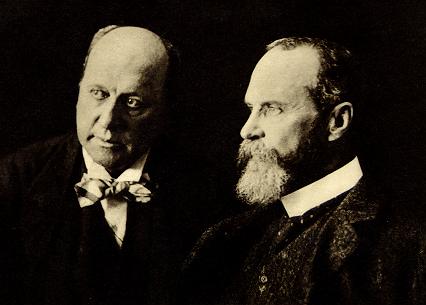"The Fed has expanded the Term Asset-Backed Loan Facility (TALF), which AI first discussed here. Here is the quick recap of the facility.
1) Fed will loan funds for purchase of recently issued ABS( ASSET BACKED SECURITIES ). This was clarified to mean ABS issued after January 1, 2009 made up of loans no older than October 2007. The ABS must be rated AAA( WHATEVER THAT MEANS ), and be made up of student loans, auto loans, small business loans, or credit cards.
2) Loans will be non-recourse and not marked-to-market. The borrower will not have to deal with margin calls due to price declines ( INTERESTING. NO NEED FOR EXTRA CAPITAL INFUSIONS ).
3) The loan term will be up to 3-years, originally was only 1 year( THAT'S TRUE ). That is extremely positive for the potential success of this program. See below.
4) The loan rate will be set at "yield spreads higher than in more normal market conditions but lower than in the highly illiquid market conditions that have prevailed during the recent credit market turmoil." In other words, lower than the rate paid on the asset( GOOD DEAL ).
So what has the Fed done here? Created an easy arbitrage. All investors have to do is do accurate credit work, and this is a guaranteed profit. Note that the 3-year term seals this thing. 3-years is basically the entire life span of most eligible collateral, so it eliminates the last thing an investor needed to worry about. Given a 1-year term, investors would have worried that the end of 1-year, new financing might not be available( ESPECIALLY A YEAR FROM NOW. IT'S MEANT TO OUTLIVE THIS DOWNTURN ). But by the end of 3-years, the asset will be all but gone.
Also through this facility, the Fed can really control consumer lending rates. The rate on newly issued AAA ABS will be stuck at a level slightly higher than the Fed's lending rate. Banks which are currently hoarding cash will fall over themselves to buy ABS and pledge them into this facility. ( INTERESTING )
Now don't read this as especially bullish for the overall economy. I still see this as a facility intended to aide in quantitative easing, and not a "fix" for the recession. Or put another way, a means of preventing the economy from getting still worse. But as far as ABS go? Should get that market rolling again."
Here's the original post:
"The Fed's new Term ABS Loan Facility (TALF) announced this week could be a significant step in improving credit availability. While many of the details of the program are not yet known, there is already several take aways.
First, this looks and smells a lot like a back-door way of reviving some of the TARP's original concept. Consider what we already know about the program. Eligible collateral for the TALF will basically include AAA-rated bonds within the major non-housing ABS sectors: auto loans, student loans, credit cards, and SBA loans. TALF loans will have a one-year term and will be non-recourse to the borrower. The facility appears to be oriented toward banks and insurance companies, but may actually be available to anyone. TALF loans "will no be subject to mark-to-market or re-margining" which is a critical part of the program.
And another post:
"If the covered bond idea is dead, for now anyway, perhaps the ABS market can pick up the slack.
Historically, ABS have typically been backed by consumer loans, including credit cards, auto loans, home equity, and student loans. ABS were typically structured with a senior/subordinate credit enhancement, meaning that certain tranches of the deal would take losses first and only once those tranches were wiped out would other tranches take a hit.
Of course, there have been numerous problems with the ratings agencies allowing too little in subordination in certain deals. But there is nothing inherently wrong with the senior/sub concept. In fact, if its kept as a simple sequential loss structure, analyzing the credit of an ABS deal becomes relatively straight forward: its just losses versus available subordination. Sounds a hell of a lot more transparent than trying to decode a bank's balance sheet! ( I AGREE )
So what if the ABS market could be revived? Lenders who could not access the unsecured debt markets could access the ABS markets, raising loanable funds. If the lender also kept a sizeable residual on the deal, the result would be similar to the covered bond idea.
Many companies would benefit directly from an improved ABS market. Credit card issuers, such as American Express, Citigroup, and Capital One. Student lenders such as Sallie Mae. Even the autos would benefit, although obviously the GM and Ford situation is much deeper, Toyota and Honda would also benefit.
It wouldn't solve all our problems. I still wish they were buying mortgage assets. But this is better than nothing."







































No comments:
Post a Comment